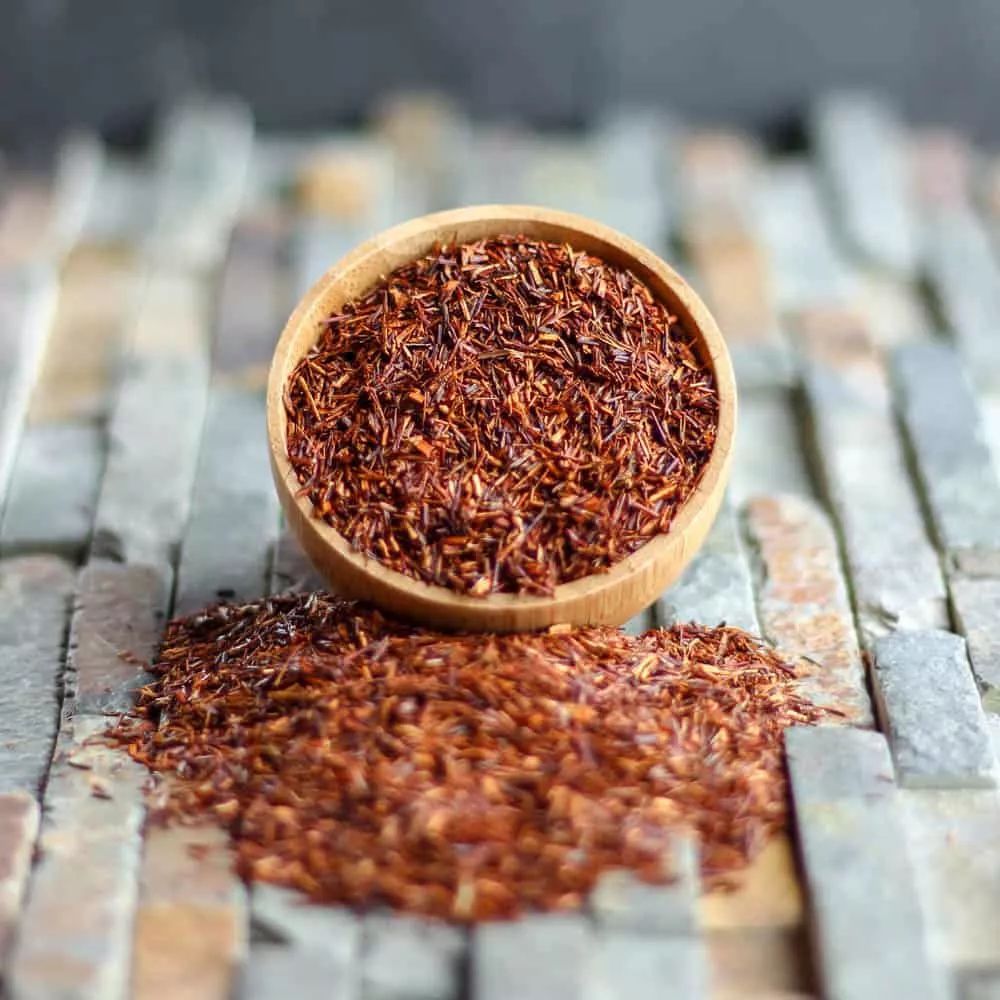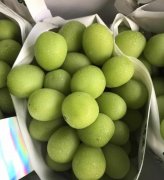The price of the "national treasure tea" of South Africa's three treasures has risen after it has been certified by the European Union.
South Africa's national treasure tea, which is rich in natural nutrition and free of caffeine, has become very popular in the beverage market in recent years. In May this year, it was certified by the European Commission and protected by its name of origin, becoming the first crop in Africa to obtain this certification. This means that even if the same raw material is used to make a similar flavor, the same name must not be used in Europe. With this certification, business value goes up.

Put the tea into the tea maker and pour it into hot water to show reddish brown. This is the national treasure tea known as South African ruby, also known as doctor tea, and gold and sapphire are also known as South African three treasures.
South Africans: "many people who may drink national treasure tea are elderly people, such as our grandma, etc., so I think it is healthy." "
National treasure tea, whose original name means red shrub, grows in northern Cape Town, South Africa. It is rich in natural nutrition and free of caffeine. It has become the new darling of the beverage market in recent years.
December every year is the season for farmers in Cape Town to harvest national treasure tea. Guobao tea has a characteristic: the worse the climate, the better it grows. According to the growing environment, the roots must go down and deep, so they absorb a lot of minerals.
National treasure tea farmer Sandberg: "the uniqueness of national treasure tea is that it exists in a very small and remote area, where it grows naturally, so it is unique. In addition, it is a very healthy product without caffeine." there are a lot of health benefits. "
After more than 10 years of efforts, Guobao tea was finally certified by the European Commission in May this year and became the first crop in Africa to obtain this certification, which is equivalent to French champagne, Darjeeling black tea in India and tequila from Mexico. Even if food with similar flavor is made from the same raw materials, it should not be called the same name in Europe.
National treasure tea farmer Sandberg: "just as champagne is unique to France, so is the national treasure tea in this region, which traditionally grows here, making it unique to South Africa, especially in this part of the Western Cape." "
London, England, an old store specializing in high-end tea, has also imported national treasure tea from South Africa. The operator said that although national treasure tea has entered the British market for more than 20 years, it still has room for growth and has been certified by the European Union for the protection of names of origin. Sales are expected to be promoted.
British tea importer Kangninghan: "who is growing the national treasure tea, where it is planted, the story about the national treasure tea, the environment and community in which we grow it, these are one of the elements we are looking for, and obviously there is flavor. I mean, the national treasure tea is great." it has a great soothing effect, calming taste, quite sweet. "
Guobao Tea covers an area of about 70,000 hectares of arable land, and a total of 350 commercial farmers and 100 emerging farmers have been planted in Cape Town. Local associations believe that the increase in the commercial value of Guobao tea will help farmers invest in sustainable agriculture and promote soil care and soil and water conservation. Brazil, on the other side of the world, is also working to conserve "bluebells".
Many people appeared on the streets of Rio de Janeiro, Brazil, photographing the blooming blueberry with their mobile phones, which can only bloom for six days at most. In order to let more people appreciate it, a local civic group specially came to take photos and upload and share.
Veronica, an environmental lawyer: "I am an environmental lawyer. I always plant trees with them and ask the city government to plant more. We watch them plant, but unfortunately, the citizens do not take care of the trees according to their needs." "
It turned out that thousands of bluebells had been removed from the local project recently. Civic groups called on the public to plant trees through activities, but the response was very polar. fortunately, the public sector discovered their righteous deeds and joined the ranks of tree planting.
Berrio, representative of the Rio Parks and Gardens Foundation: "when we uploaded social media, there was a craze, and our fans loved it, shared it and started to report back more blooming places, so the road map was reshaped. Our whole city has 100 wind chimes, which can be called Rio de Janeiro of wind chimes. "
There are at least 14 species of wind chimes, which are now in full bloom and will be changed to yellow flowers in September. They can not only beautify the city, but also regulate the climate, and tree trunks can be used as high-quality wood building materials, although they have been removed from the list of endangered species. But the Amazon rainforest is often cut down illegally. Greenpeace called on the Brazilian government to conduct a comprehensive review of the current regulatory system to protect precious tree species.
- Prev

Sunny Rose King shine-muscat Grape prices plummeted
The name of shine-muscat is Qingwang in Japan and Sunshine Rose in China. Once the price was 500 yuan per jin, it has been introduced for only 6 years since 2015, and its market price is 10 yuan, which is a good thing for the market.
- Next

Taiwan history drama! Behind the scenes of Tea Gold, the History and Drama of Jiang Ah-hsin House, Taiwan's strongest Tea Merchant
The English title of GoldLeaf-- Public TV's latest drama "Tea Gold" throws out a mystery: what leaves can be like gold? This leaf is black tea. There was a time when tea was more expensive than gold. Europeans were popular to drink tea, but tea was only produced in China, Taiwan, Assam, India and other very few areas.
Related
- A one-day flower show brings 130 million yuan in orders! Nanhai, this Phalaenopsis exhibition is amazing
- What do the flower language and meaning of Lutheran tree mean? Precautions for planting Lutheran tree
- Encounter Chaoshan Kongfu tea, not without this cup of Phoenix single clump
- The durian market in Vietnam and Thailand is flooded. The price of imported durian has plummeted by 30-40% in a month.
- Shanghai solved the problem of local vegetable supply by planting 80,000 mu of green leafy vegetables.
- Wageningen University has become the best agricultural university in the world for the seventh time in a row.
- The strongest export season of South African grapes is full of challenges, with exports to Russia falling sharply by 21%.
- Sri Lanka is on the verge of bankruptcy, "Tea for debt" Organic Agriculture Revolution aggravates the Food crisis?
- Turning waste into earthworm manure and worm manure into organic fertilizer-A new choice for auxiliary farming
- Organic rice growers shoulder the responsibility of nurturing agricultural talents! Yinchuan Sustainable Farm with Organic Life Camp

